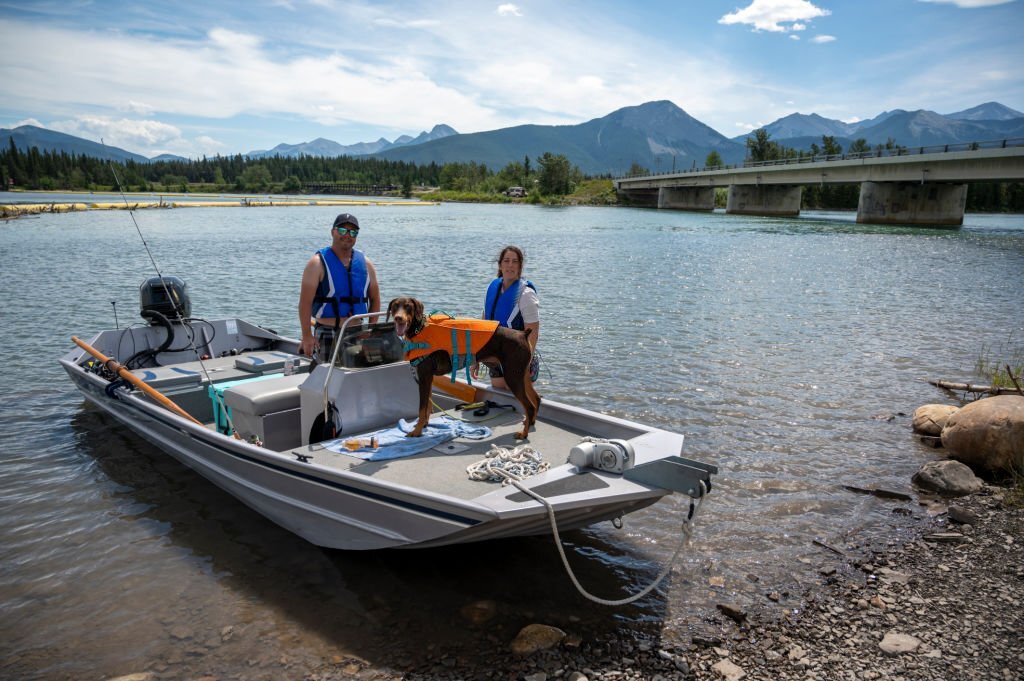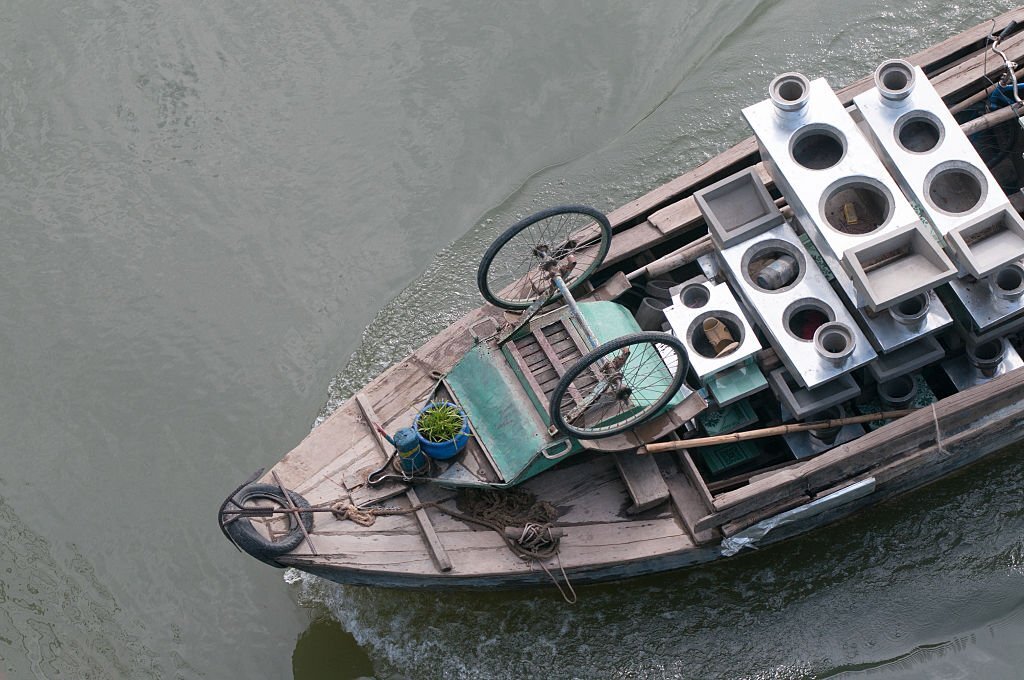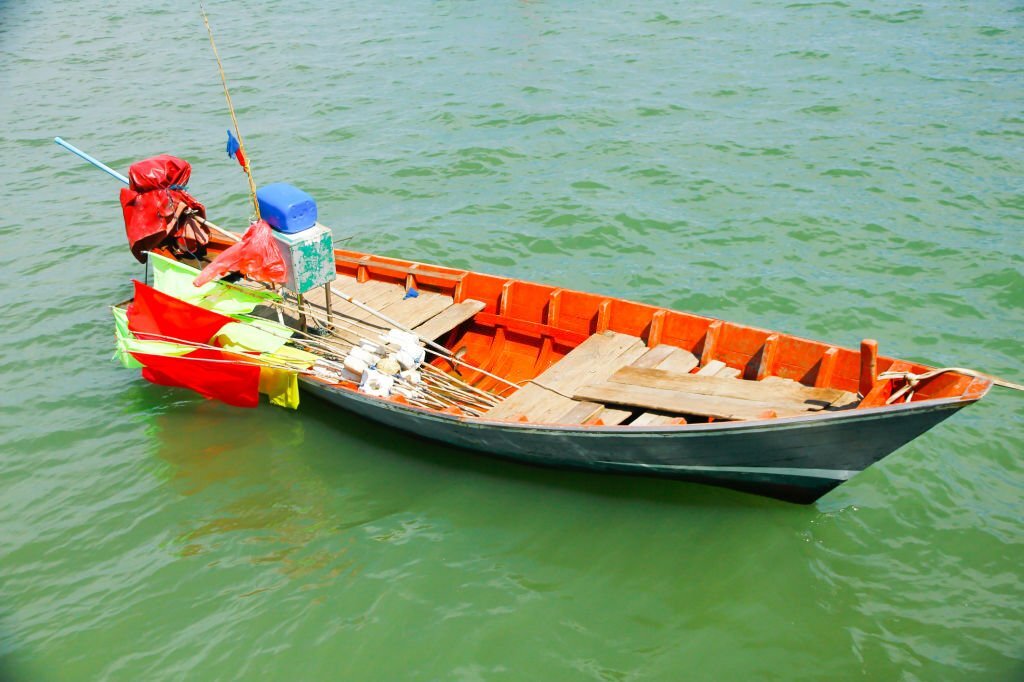Table of Contents
1. The importance of boat safety

First and foremost, it is essential to have the appropriate safety equipment on your boat. This includes life jackets, fire extinguishers, flares, a first aid kit, and a throwable flotation device. These items are not only required by law in many jurisdictions, but they can also be lifesavers in case of an emergency.
Capacity and Weight
It is important to know the capacity and weight restrictions of your boat. Overloading a boat can make it unstable and raise the chances of it capsizing or sinking. Make sure to follow the manufacturer’s guidelines. Keep the number of passengers and amount of gear within the recommended limits.
To ensure safe boating, it’s important to know about weather conditions and waterway regulations. Make sure to stay informed about the weather forecasts and be ready to change your plans if needed. Make sure you know the local boating rules to avoid accidents and conflicts with other boaters. To make driving safer, it’s important to know the speed limits, navigation aids, and right-of-way rules in your area.
It is important to always have a backup plan in case of engine failure or other mechanical issues. Additionally, make sure that your boat’s communication devices are in good working order.
To have a safe and fun time on the water, it’s important to pay attention to and learn about boat safety. Please keep in mind that accidents can happen quickly. By taking precautions, you can ensure a safe and enjoyable journey for you and your passengers.
2. Understanding the risks of overloading a boat
To have a safe and fun trip on a boat, it’s important to know the dangers of overloading it. Overloading a boat can be very dangerous. It can make the boat sit low in the water and easily tip over, risking the lives of passengers.
When a boat is overloaded, it is harder to keep it balanced. This is especially true in rough waters or when making sudden turns. This can cause loss of control, possibly leading to a dangerous accident. Also, overloading a boat affects how it floats, making it harder to stay above water.
Boats have a maximum weight limit set by the manufacturer. If you go beyond it, the boat can flood and sink. When a boat carries too much weight, it becomes more prone to taking on water. This makes navigation difficult and puts everyone on board at great risk.

Furthermore, an overloaded boat may not have enough life jackets or safety equipment for all passengers. In the event of an emergency, having an insufficient number of life jackets or safety equipment can have catastrophic consequences. It is essential to ensure that there are enough life jackets, flotation devices, and other safety equipment on board to accommodate all passengers, including any unexpected guests.
Impact of Overloading on Maneuverability
Overloading a boat negatively impacts its performance and maneuverability. Excess weight on the boat can make it hard to go fast, turn quickly, and respond to the captain’s commands. In crowded waterways or emergencies, it may be necessary to act quickly to avoid danger.
To ensure boat safety, it is crucial to be aware of the weight capacity and strictly follow it. To determine the weight of passengers, cargo, fuel, and any additional items on board, it’s important to consider these factors. Make safety your top priority when using a boat. Distribute weight evenly and don’t exceed the recommended capacity.
Boaters must be aware of the dangers of overloading a boat to keep everyone safe. To have a safe and fun boat trip, you should handle the boat responsibly and not overload it with too much weight.
3. Know your boat’s weight capacity
Knowing your boat’s weight capacity ensures a safe and comfortable sail. Never exceed the weight restriction on any watercraft. The manufacturer sets this restriction depending on the boat’s design, construction, and usage. Exceeding this weight restriction puts the vessel at risk and reduces its stability and maneuverability.
Refer to the manufacturer’s literature or the boat’s capacity plate to determine its weight capacity. This plate is usually mounted at the helm or elsewhere. It lists the maximum weight, number of passengers, and other relevant information.
When assessing whether your boat can safely carry a given number of people or goods, weight and load distribution are vital. Balance and stability may be affected by uneven weight distribution, making the boat more likely to capsize or swamp.
Start by estimating the weight of people, gasoline, gear, and supplies to keep under your boat’s weight capacity. Be aware that any additions or changes made to the boat following its purchase may affect its weight capacity.
Adjustments are needed if you’re nearing or above the weight limit. This may include decreasing passengers, redistributing weight, or leaving stuff behind. Even if it means sacrificing, safety should always come first.
Know your boat’s weight capacity and follow it to guarantee a safe and pleasant journey for you, your guests, and your vessel. Always be cautious and never underestimate weight distribution for boating safety.
4. How to calculate the weight of passengers and cargo
When it comes to boating safety, one crucial aspect is understanding how to calculate the weight of passengers and cargo. Overloading a boat can lead to instability, decreased maneuverability, and even capsizing, putting everyone on board at risk. To ensure a smooth and safe voyage, here are some key tips for calculating weight:
1. Know the weight capacity: Every boat has a designated weight capacity specified by the manufacturer. This information can usually be found on a plate or in the owner’s manual. It is essential to know and adhere to this limit to prevent overloading.
2. Weigh passengers individually: Ask each passenger to step on a scale before boarding the boat. This will help you accurately determine the weight distribution and ensure it remains within the recommended limits. Don’t forget to account for any additional gear or equipment they may be carrying.
3. Estimate the weight of cargo: If you have any cargo or equipment on board, such as coolers, fishing gear, or water sports equipment, estimate their weight as accurately as possible. Use a scale or refer to the manufacturer’s specifications to get an idea of their weight. Add these weights to the total passenger weight.
4. Consider fuel weight: Fuel is often overlooked when calculating weight, but it can significantly impact the boat’s stability. Estimate the weight of the fuel by knowing the capacity of the fuel tank and considering the weight of a gallon of the specific fuel type used. Add this weight to the overall calculation.
5. Use online resources or mobile apps: To simplify the process, you can use online resources or mobile apps specifically designed for calculating boat weight. These platforms often provide customizable options for different boat types and give you a clear understanding of the weight distribution.
Remember, it is crucial to stay well below the weight capacity of your boat. Overloading not only compromises safety but also affects the boat’s performance and handling. By taking the time to accurately calculate weight and distribute it evenly, you can ensure a safer and more enjoyable boating experience for everyone on board.
5. Distributing weight evenly for stability
Proper weight distribution is essential for boat stability and safety. Uneven weight distribution may cause capsizing, swamping, and other problems. Tips for correctly dispersing boat weight may help minimize these risks.
Know your vessel’s maximum weight capacity first. Overextending this limit might affect the boat’s construction and stability. The safe weight limit for your boat should be determined by the manufacturer or a nautical specialist.
Spread the weight equally throughout the boat after determining its maximum weight capacity. Place heavy objects like coolers or equipment in the boat’s middle and lowest. This will prevent tipping by maintaining a balanced center of gravity.

Additionally, consider the positioning of passengers on the boat. Encourage individuals to sit in designated seating areas rather than congregating in one section. If you have a larger group, evenly distribute the weight across both sides of the boat to maintain balance.
Furthermore, be mindful of how you load and secure any additional cargo or equipment. Ensure that heavier items are positioned closer to the boat’s centerline and secure them properly to prevent shifting during the voyage. Distributing weight evenly not only promotes stability but also helps to maintain optimal performance and fuel efficiency.
Distribute Weight Evenly
Regularly monitor and adjust weight distribution as needed throughout your trip. As passengers move around the boat or items are accessed, the weight distribution may shift. Stay vigilant and make necessary adjustments to maintain a stable and safe boating experience.
Remember, proper weight distribution is a fundamental aspect of boat safety that should never be overlooked. By following these tips and keeping a keen eye on weight distribution, you can enjoy a smooth and worry-free voyage on the water.
6. Essential safety equipment to have on board
When it comes to boating, safety should always be a top priority. Having the right safety equipment on board can make a significant difference in preventing accidents and ensuring a smooth voyage. Here are some essential safety equipment items that should be on every boat:
1. Personal flotation devices (PFDs): PFDs, also known as life jackets, are a must-have for everyone on board. Make sure you have enough PFDs that are appropriate for each passenger’s size and weight. It’s also crucial to regularly inspect them for any signs of wear or damage.
2. Fire extinguishers: Fire can be a serious threat on a boat, so having at least one fire extinguisher on board is vital. Make sure the extinguisher is appropriate for extinguishing different types of fires, such as those caused by fuel or electrical equipment.
3. Navigation lights: Proper navigation lights are crucial for safe boating, especially during low visibility or nighttime conditions. Ensure that all lights are functioning correctly and are easily visible to other vessels on the water.
4. Sound signaling devices: Sound signaling devices, such as a horn or whistle, are essential for alerting other boaters of your presence or potential danger. Check that these devices are in working order before setting sail.
5. Anchor and lines: An anchor is essential for keeping your boat in place when needed. Make sure you have a suitable anchor and enough anchor lines to secure your boat in different conditions. Familiarize yourself with proper anchoring techniques to avoid any mishaps.
6. First aid kit: Accidents can happen, even on the water. Having a well-stocked first aid kit on board is essential for treating minor injuries and providing immediate medical attention until further help arrives.
7. Tool kit and spare parts: It’s always a good idea to have a basic tool kit and spare parts on board for any minor repairs that may be needed during your voyage. This can help you fix simple issues and avoid being stranded on the water.
Remember, having these essential safety equipment items on board is just the beginning. It’s equally important to regularly inspect and maintain them to ensure they are in proper working condition. By prioritizing safety and being prepared, you can enjoy a smooth and worry-free boating experience.
7. Preparing for emergencies and practicing safety drills
Preparing for emergencies and completing safety exercises are crucial to boat safety. It’s necessary to hope for the best but also prepare for the worse. This requires a well-planned emergency plan and frequent safety exercises to ensure everyone understands what to do in an emergency.
Emergency preparation requires having safety equipment on hand and operating properly. This comprises first aid kits, fire extinguishers, distress signals, life jackets for all passengers, and any additional equipment necessary by local boating rules. To ensure they work and are ready to use, examine and repair them regularly.
In addition to having the necessary equipment, crew members should be educated on emergency protocols and assigned roles and duties. This way, everyone understands their roles and can respond quickly in an emergency. Practice man overboard, fire, and leaving ship protocols with frequent safety drills. This practice reinforces skills, builds confidence, and reduces terror in an emergency.
Having a maritime VHF radio or satellite phone on board is also important. This lets you call for help and remain connected to emergency services and nearby boats. Before sailing, learn how to use and maintain the communication equipment.
Finally, keep an eye on weather and road dangers. Always check weather predictions and be ready to change plans to prevent risk. Staying aware and taking steps will reduce boating emergency risks and guarantee a safe and pleasurable cruise for everyone.
8. Checking weather conditions before setting sail
Before a boat trip, check the weather. Weather is unpredictable, thus everyone’s safety must be prioritized.
Start with current weather predictions from local weather stations or credible marine websites. Be aware of present circumstances and anticipated changes throughout your travel.
Consider wind speed, wave height, and visibility. High winds and heavy waves may make sailing dangerous for the boat and its passengers. Fog or severe rain may also impair navigation.
Along with verifying the weather prediction, ask experienced boaters or local authorities for local tips and cautions. They may advise you on travel dangers and limits.
Remember that even good weather may quickly turn bad, particularly on open ocean. Always take precautions to protect yourself and your passengers. Reschedule or choose another activity until sailing conditions improve.
You may greatly decrease the risk of hazardous circumstances and guarantee a safe journey for everyone by carefully examining and monitoring weather conditions before setting sail.
9. Keeping an eye on the water conditions during the voyage
Keep an eye on the water conditions when boating to navigate safely. Awareness of risks and environmental changes can assist guarantee a safe and smooth ride since water conditions change quickly.
Weather forecasts should be considered first. Before leaving, check the weather for your journey. Storms and heavy winds may make the ocean more dangerous, so watch for warnings. If bad weather is expected, postpone or choose a safer route.
Current and tides should also be monitored. Safe sailing requires knowledge of water flow and tides. Strong currents or fast changing tides may make boat steering difficult and raise the danger of accidents or stranding.
Submerged rocks, sandbars, and floating debris must also be considered. Watch for buoys, navigation markings, and other signs of safe passage. To prevent boat damage, change your course if you meet dangerous items.
In addition to these external elements, water behavior must be observed. Choppy waves, forceful swells, or unexpected water color changes may signal shallow places or concealed risks. Control your speed and navigation to be safe.
Stay watchful and observe water conditions to sail securely and smoothly. To guarantee a safe and pleasurable sailing experience, prioritize safety and be flexible.
10. The role of proper maintenance in boat safety
Boat and passenger safety depends on proper maintenance. Regular vessel maintenance improves its lifetime and prevents accidents and breakdowns on the sea.
Checking engine and mechanical components is crucial to boat maintenance. Check the fuel system, oil levels, belts, hoses, and filters. Regular engine maintenance and following manufacturer recommendations can keep your boat working smoothly and reduce engine failure.
The engine and electrical system must be considered. Test all wiring, connections, and batteries to confirm they work. Faulty electrical components may cause fires or breakdowns, endangering the boat and its passengers. Safe and trouble-free sailing requires regular electrical system cleaning and inspection.
Boat maintenance also requires checking the hull and other structural components for damage or wear. Find cracks, blisters, soft patches, and loose or damaged fittings on the hull. To minimize additional damage and for everyone’s safety, boat construction flaws should be corrected immediately.
Maintain safety equipment such life jackets, fire extinguishers, and distress signals. Check expiration dates and make them conveniently accessible in an emergency. Safety on the water requires regular inspection and replacement of old or defective safety equipment.
Overall, boat safety requires regular maintenance. Checking and maintaining your boat’s engine, electrical system, hull, and safety devices frequently helps avoid issues and ensure a safe and enjoyable cruise.
11. Conclusion: Prioritizing safety for a smooth and enjoyable boating experience
Prioritizing safety is crucial for a safe and fun boating experience. To ensure safety and avoid overloading your boat, follow these top tips. Always stick to the maximum weight limit of your boat and never go over it.
By doing so, you can navigate the waters confidently and with peace of mind. Overloading can lead to instability, decreased maneuverability, and potential accidents. Make sure to evenly distribute the weight in the boat and secure everything to avoid it moving during the trip. Regularly check and maintain your boat, including the hull, engine, electrical systems, and safety gear.
This will help you catch problems early, keeping your boat in good shape for every trip. Remember to check the weather beforehand and be ready for any changes. It’s important to be cautious of storms, strong winds, and rough waters as they can be dangerous. Make sure to check the weather forecast and adapt your plans accordingly.
Prioritize Necessary Equipment
Make sure your boat has important safety equipment like life jackets, fire extinguishers, distress signals, navigation lights, and a first aid kit.
Make sure every passenger knows where to find and how to use safety items. Also, remember the significance of boating education and training. Take a boating safety course to learn important skills, rules, and best practices.
Education can greatly improve your boating experience. It helps ensure safety on the water. By putting safety first and following these tips, you can have a fun and safe time boating. Remember, a good captain keeps everyone on the ship safe and happy, making each trip memorable and fun.
We hope you found our blog post on boat safety tips helpful and informative. Navigating the waters can be an exhilarating experience.
